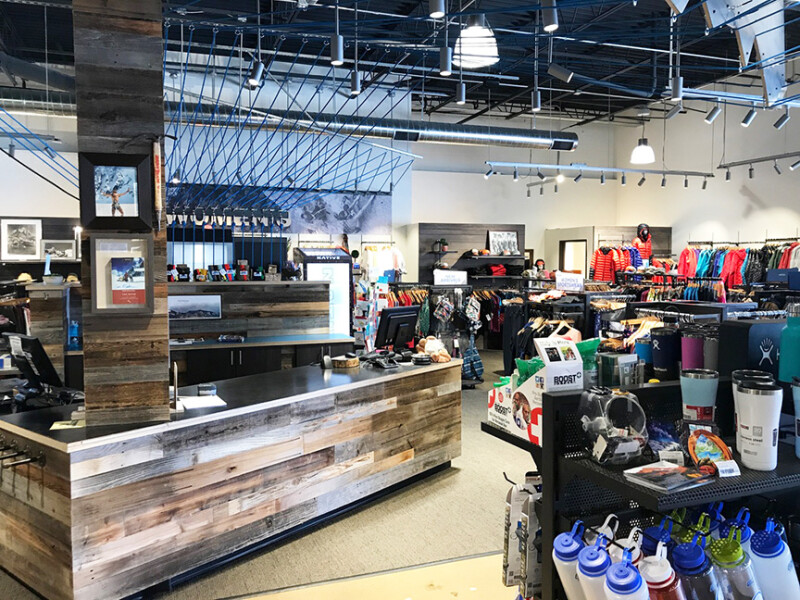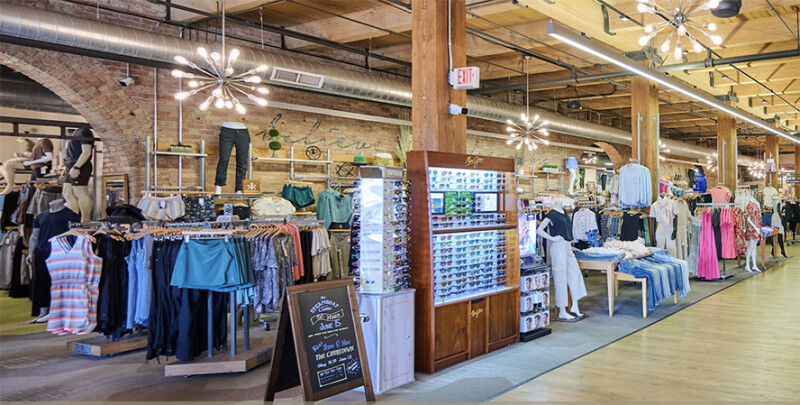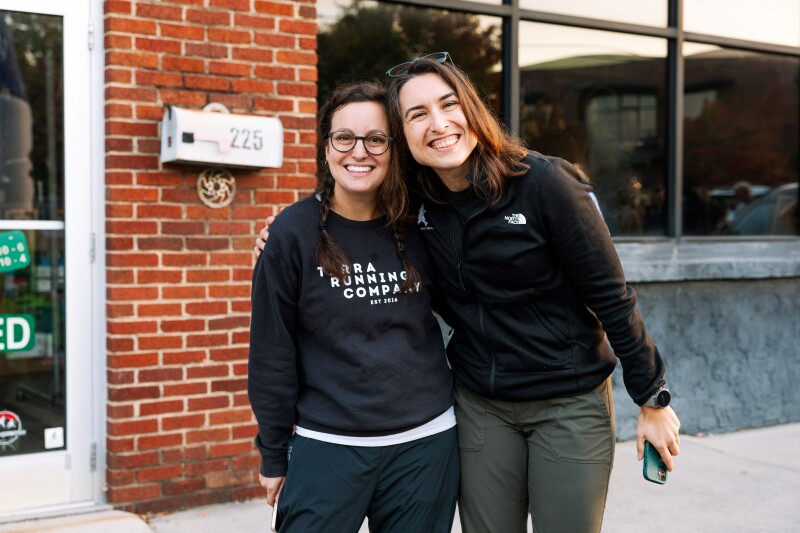While many run shops dabble in trail running – maybe a little trail footwear here, a trail race there – Mountain Running Company isn’t one of them.
At the three-store retail chain in western North Carolina, trail footwear from the likes of Topo, Salomon and La Sportiva consumes about half of its shoe walls. Its stores host weekly trail runs and staff members champion trail running on the sales floor.
“Trail running is essential to who we are,” Mountain Running Company co-owner Bill Flanagan says.
While Mountain Running Company’s enthusiasm for the trail category is certainly shaped by its presence in a trail-rich region of the U.S., it’s not the only reason Mountain Running Company has committed itself to the category.
Despite trail being a small piece of run specialty retail’s overall revenue pie, Mountain Running Company and other running stores around the country, such as Ragged Mountain Running & Walking Shop in Charlottesville, VA, and Medved Running & Walking Outfitters in Rochester, NY, see sound business reasons for investing in the trail category.
Reason #1: Interest in the trails continues to grow.
Over the last decade, participation in trail running has soared 231 percent, according to data from RunRepeat. In particular, female participation has surged, with women now representing nearly half of all trail runners — a three-fold increase from 1997.
Races are growing, too. Six years ago, only three out of every five trail races had more than 500 finishers. These days, nearly 90 percent of trail races top 500 finishers.
Beyond trail running, the hiking category continues experiencing growth as well. In the latest installment of the Outdoor Participation Trends Report, the Outdoor Industry Association and the Outdoor Foundation reported that 881,000 people began hiking last year, pushing the U.S. hiking population to 60 million.
Reason #2: Trail runners are ripe to buy more from running shops.
At Mountain Running Company, Flanagan regularly sees customers purchasing footwear for both the road and the trail. Many are experienced road runners eager to incorporate trail runs, though he’s also seeing more seasoned trail runners embrace the roads to feel something faster.
Ditto at Dan Medved’s namesake running shop in Rochester.
“The trail runner doesn’t only run trails. They’re often investing in road shoes, too,” Medved says.
Beyond the footwear category, trail runners tend to tackle longer efforts and understand the peculiarities of the trail, which often compels an investment in additional products, such as socks, nutrition, hydration and safety items like headlamps.
“The opportunity is certainly there to sell more items to existing customers when they’re running longer distances or on trails where certain products are helpful to have on hand,” Medved says.
Reason #3: Having trail inventory enhances customer service and satisfaction.
Admittedly, carrying trail product requires an investment of money and space. With heightened interest in getting on the trails, however, comes heightened interest in trail gear. Having trail-oriented products readily available is central to servicing customers and making run specialty shops the lively special retail environments they aim to be.
“I hate telling people we don’t have what they want or need,” says Ragged Mountain’s Alec Lorenzoni, whose college town shop carries about two dozen trail footwear SKUs for each gender. “No, we can’t carry everything, but we want to be able to offer a strong mix of products to anyone who comes through our door.”
Reason #4: The trail footwear category boasts more pop than ever before.
Up until recent years, trail running footwear was largely utilitarian. Those days have vanished, however. Trail footwear subcategories continue to blossom, bringing energy to shoe walls and providing run shops exciting new storytelling opportunities.
There are trail “super shoes” like the Hoka Tecton X and Saucony Endorphin Edge; hybrid models offering door-to-trail versatility like the Altra Outroad and the Craft Nordlite Ultra; and snappy, speed-oriented models, such as the Merrell Test Lab Skyfire 2 and the inov-8 TrailFly G270.
“It expands our customer base when we have intriguing solutions to offer,” Medved says.
Reason #5: Trail gear offers sales possibilities even if customers never touch a trail.
Trail gear often functions as lifestyle gear, favored for its durability and rugged looks. That, too, presents a sales opportunity to run shops. Medved Running & Walking, for instance, carries trail-oriented brands like Patagonia and Outdoor Research pairing technical performance with lifestyle flair.
Yet more, trail gear can be promoted with the seasons as well. In slushy, snowy winter locales, trail shoes work well given their added grip and thicker upper materials, whether one is running on the roads or running errands. Merino wool socks are also a wintertime favorite for work and lifestyle, while hydration packs have become a popular accessory at music festivals.
________________
10 ways running stores can celebrate and promote the trails
1: Keep group trail runs short and sweet. With its Thursday morning trail run, Mountain Running Company makes a point of welcoming runners and walkers of all levels. The run/walk maxes out at five miles and includes post-activity coffee in the trailhead’s parking lot.
2: Adopt a positive spirit. Medved Running & Walking promotes its Wednesday trail runs with a simple tagline: “Let’s Explore.” It sets the stage for something adventurous and playful, not intimidating or grueling.
3: Get a little wacky. Outside of Dallas, Trailhead Running Supply’s Friday Night Lights trail run offers folks a unique running experience under the nighttime sky (photo below). While providing participants a dynamic fitness experience, the gatherings also spotlight the value of assorted trail gear, particularly headlamps.
4: Think beyond runners. Ragged Mountain Running & Walking hosts a monthly trail hike led by store co-founders Mark and Cynthia Lorenzoni. Medved Running & Walking, meanwhile, has offered guided educational hiking tours focused on invasive species found on local trails.
5: Spotlight local trails on social media. The Portland Running Co. shares short, informative synopses of local trails on its Instagram feed, providing photos of a venue, basic details and a tidy pros-and-cons list addressing things like parking and bathroom availability.
6: Highlight local trails in the store. Mountain Running Company features a Trail Talk section in its store, which features maps and suggested routes.
7: Push trail into customers’ subconscious. When Dan Medved remodeled his Rochester, NY, running store in 2022, he incorporated trail images into the design. It’s a subtle reminder to customers that running can be done off the treadmill, track or road.
8: Put trail on a pedestal. Each spring, Medved Running & Walking hosts Voices of the Trail. The panel discussion event features local trail runners sharing their experiences on the trail and touting the benefits and rewards of hitting the trails.
9: Provide opportunities for competition. Races are a great way to entice people to test themselves on the trails. In suburban Chicago, Dick Pond Athletics launched a four-race trail series hitting different distances and venues around Chicagoland.
10: Be a steward of the trails. Leading trail clean-up events demonstrates a running store’s community and environmental-minded ethos. It also offers store personnel a chance to build relationships with community members and showcase local trails.







